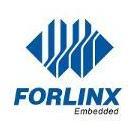Search the Community
Showing results for tags 'machine vision'.
-
An intelligent service robot is a robot that integrates advanced technologies such as artificial intelligence, perception technology, and machine learning. Its purpose is to provide a variety of services and support to meet the needs of people in daily life, business, and industrial fields. These robots can sense the environment, understand speech and images, perform tasks, and interact naturally and intelligently with human users. Areas of Application: Business Services: It includes services such as reception, shopping assistance, and information inquiry, and can be used in places such as shopping malls, hotels, and exhibitions. Health Care: It provides services such as drug delivery, patient companionship and health monitoring for hospitals and nursing homes. Educational Assistance: It is used in educational scenarios to provide auxiliary teaching, answering questions and other services. Family Services: Provide cleaning, handling, home control and other services to improve the quality of life. The hardware structure of the service robot includes several key components. The functions and roles of these hardware components are as follows: Controls: As the core of the robot, the control device is responsible for receiving and processing the data provided by the sensors, executing the corresponding algorithms, and issuing instructions to the driving device to achieve the various functions of the robot. High-performance, low-power ARM chips are often chosen for the control unit, ensuring that the robot has sufficient computational and storage capacity. Drive unit: This includes motors and drivers, which are used to execute the motion and action commands of the robot. The motor is responsible for providing power, while the driver converts electronic signals into mechanical motion. This part is the motion system of the robot, which determines the execution of actions such as walking, turning, and the mechanical arm. Camera: As the ''eyes'' of the robot, the camera is used to capture images and facial information of the external environment. These image data can be used for tasks such as environmental perception, navigation, target recognition, allowing the robot to better understand and adapt to the surrounding environment. Sensors: Sensors provide the robot with various perceptual abilities, including vision, touch, hearing, and distance sensing, among others. Angle sensors and current sensors reflect the robot's own state, while temperature sensors, laser sensors, ultrasonic sensors, infrared sensors, etc. are used to collect external environmental information, allowing the robot to perceive and understand the surrounding situation more comprehensively. Display and Audio: As an important part of human-computer interaction, display and audio devices realize the presentation and interaction of user interface. The touch display provides an intuitive graphical user interface, while the voice interaction system enables the robot to understand the user's instructions and respond accordingly, thus better communicating with the human user. Folinx Embedded has launched the FET3588J-C SoM as the main control platform for this intelligent inspection robot product to meet customers' needs for machine vision and high-speed interfaces. FET3588J-C SoM is developed and designed based on Rockchip's RK3588 processor, integrating Cortex-A74-core-6 + 4-core Cortex-A55 architecture. The main frequency of A76 core is up to 2.4GHz, and the main frequency of A55 core is up to 1.8GHz, which can efficiently process the information collected by patrol inspection; The built-in NPU with comprehensive computing power of up to 6 TOPS greatly improves the calculation speed and energy efficiency of neural networks,providing robots with powerful AI learning and edge computing capabilities, enabling them to intelligently adapt to different work scenarios. RK3588J supports a 48-megapixel ISP3.0, which enables lens shading correction, 2D/3D noise reduction, sharpening and haze removal, fish eye correction, gamma correction, wide dynamic range contrast enhancement, and other effects. This significantly enhances the image quality. With abundant interface resources, it meets the robot's access requirements for various sensors. More sensor access helps the device to collect environment data more comprehensively. This platform also supports external storage interfaces such as SATA3.0, USB3.0, allowing data to be locally stored. It also supports wireless communication methods such as WiFi, 4G, and 5G, making it convenient for users to query device information on mobile devices. The rich functionality enables robots to perceive and understand the surrounding environment more comprehensively. It also has high stability. The platform’s SoM has undergone rigorous environmental temperature and pressure tests, and can operate for long periods in harsh industrial environments ranging from -40°C to +85°C, adapting to applications in various scenarios.
-
- rk3588j
- intelligent service robots
- (and 3 more)

